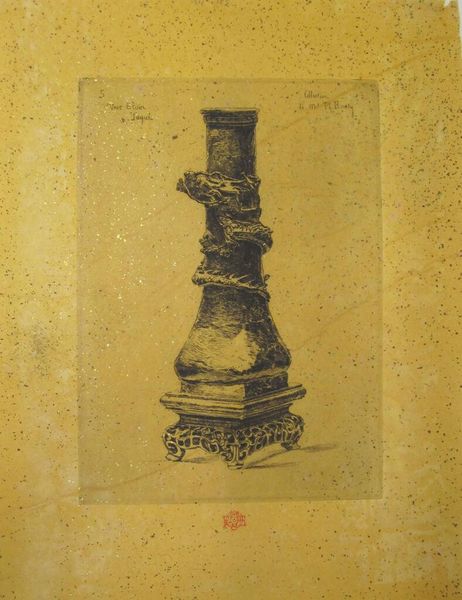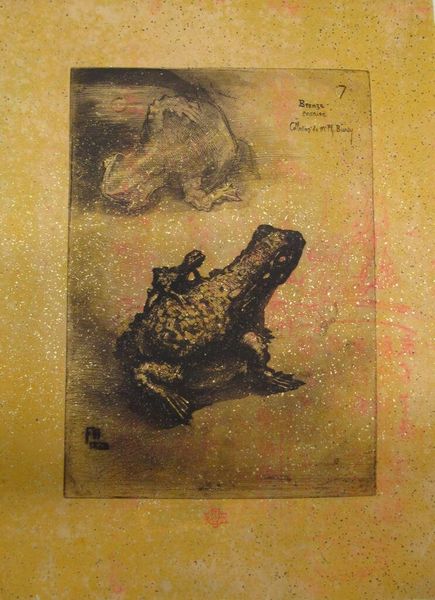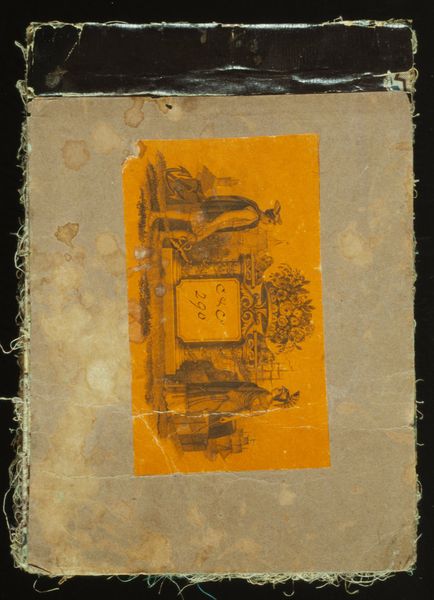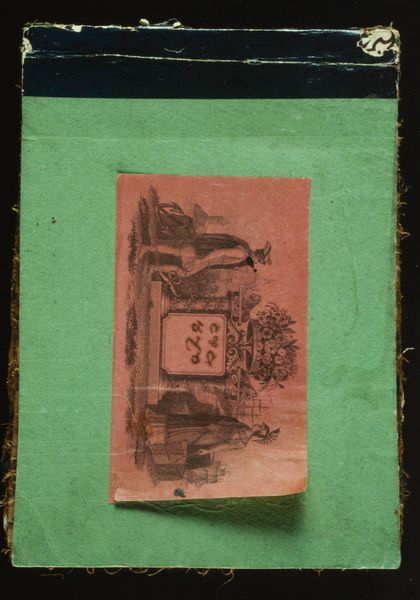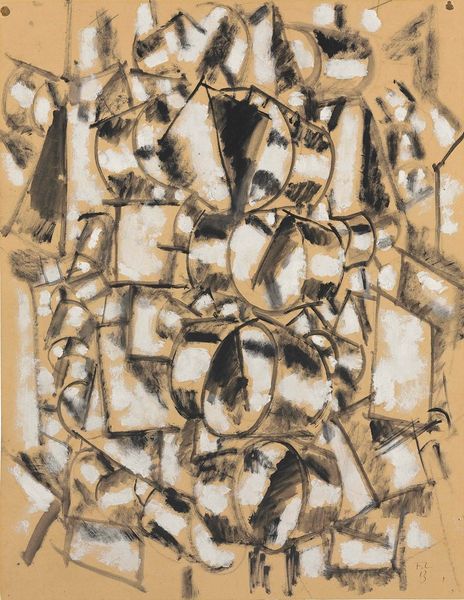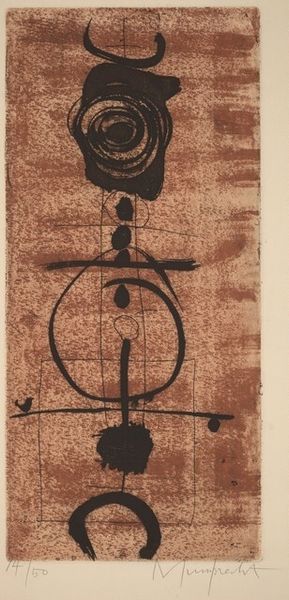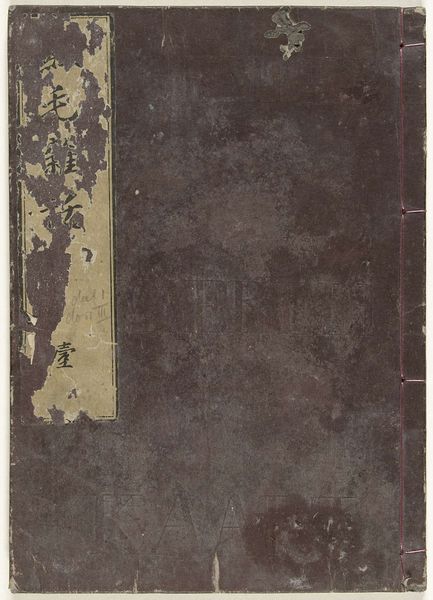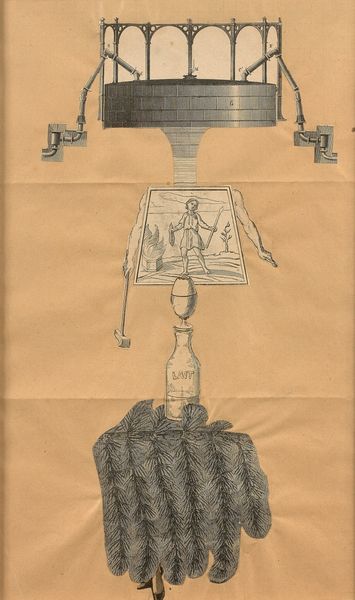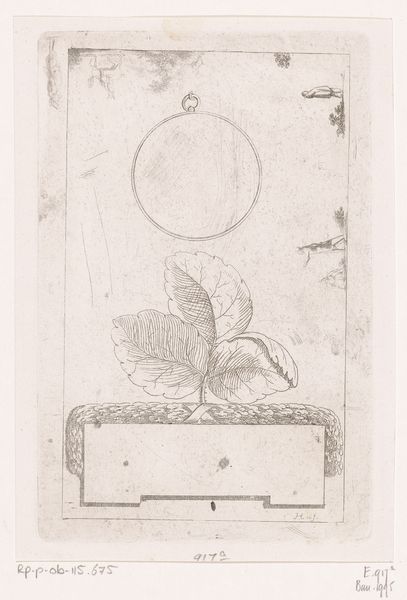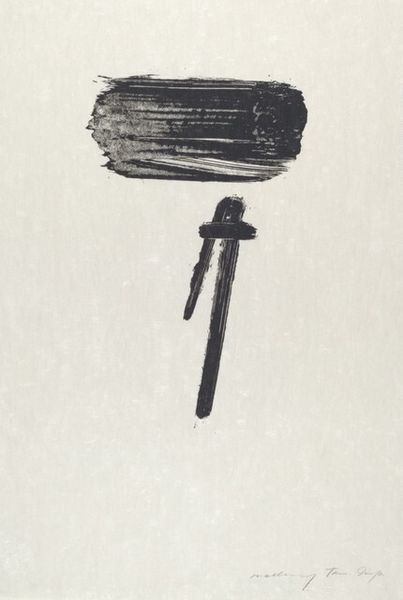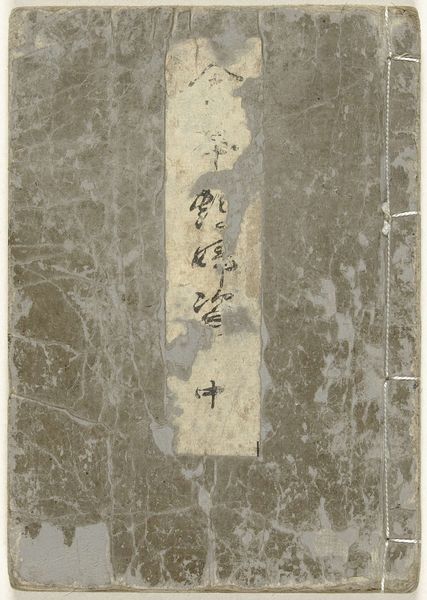
Dimensions: sheet: 30.3 x 20.2 cm (11 15/16 x 7 15/16 in.) plate: 18.9 x 14.7 cm (7 7/16 x 5 13/16 in.)
Copyright: CC0 1.0
Curator: This print by Félix Hilaire Buhot is called "Ivory Netsuke." I'm struck by the way Buhot captures the essence of a small, intricately carved object on such a grand scale on this sheet. Editor: My first impression is one of delicate, aged elegance. The choice of monochrome and the speckled paper evoke a sense of history and preciousness. Curator: Exactly! The Netsuke is a toggle, typically made of ivory, used to suspend objects from a kimono sash. The figures carved here seem to depict an idyllic scene, perhaps a reference to traditional stories or values. Editor: Considering Buhot was a 19th-century French artist, I wonder about the context of representing Japanese objects. Was it simply aesthetic appreciation, or did it engage with broader colonial narratives and exoticism common in the era? Curator: It's a valid point. Buhot was known for his interest in Japanese art, a trend known as Japonism. He often incorporated Japanese motifs and techniques into his prints, seeing in them a symbolic and aesthetic richness he admired. Editor: So, it's a complex intersection of cultural exchange and potential appropriation. Recognizing that tension helps us to unpack the layers of meaning in the work, as well as the history of interactions. Curator: Indeed. The dialogue between East and West, object and image, continues to resonate. Editor: This piece challenges us to consider the politics of representation and how cultural artifacts carry meaning across time and space.
Comments
No comments
Be the first to comment and join the conversation on the ultimate creative platform.
